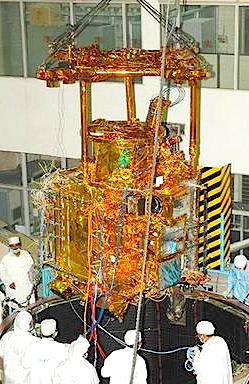
Chandrayaan-1 was successfully launched in 2008.— file photo: ISRO
The ISRO is getting ready to land on the moon in a year or so, but first they're practicing at home, in India, with artificially created craters that resemble the lunar surface.
Last Friday, the Indian Space Research Organization (ISRO) started the first set of a series of ground and aerial tests related to the critical moon landing of Chandrayaan-2.
The latest aerial tests took place at ISRO’s new site at Challakere in Chitradurga district, some 400 km from Bengaluru.
ISRO Satellite Center or ISAC, which is the lead center for the country’s second moon mission, has artificially created eight to 10 craters to make the terrain resemble the lunar surface. This terrain is now the test bed for the lunar Lander’s sensors.
Sensors tested
Between Friday and Monday, a small ISRO-owned aircraft carrying equipment with the sensors flew a few times over these craters to see how well they performed. The space agency, along with other scientific and strategic agencies, owns vast acres of land for its future missions at Challakere, in what is called Science City.
ISAC Director M. Annadurai told The Hindu, “The campaign for the Lander tests of Chandrayaan-2 has started. The tests are conducted over the craters simulated at Chitradurga. We are using an aircraft to assess whether the numerous sensors on the Lander will do their job [later] of identifying the landing spot on Moon.”
Chandrayaan-2 is tentatively marked for late 2017 or early 2018 launch and includes a soft-landing on moon and operating a rover on its surface.
Complicated process
Landing on an alien surface is a very complicated activity, said Dr. Annadurai, who was also the Project Director for the successful Chandrayaan-1 of 2008. The success of the Lander hinges on the sensors. As the Lander descends from the mother ship or Orbiter, its sensors must judge the distance to the lunar surface.

